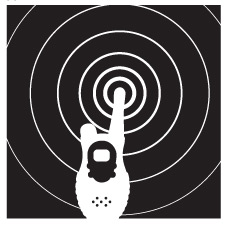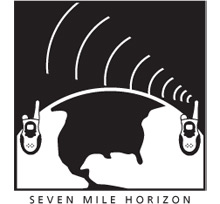** Understanding Radio Range Claims
| ** Understanding Radio Range Claims | |
| Two-way radios that use the Family Radio Service (FRS) and General Mobile Radio Service (GMRS) frequencies maintain specific range claims, which can prove confusing for consumers. The Motorola Talkabout® Radio range claims are based on, and verified by, independent field surveys. To comprehend these independent claims it helps to understand the theory of radio wave propagation and the engineering constraints and subsequent compromises taken when designing radios. | |
|
|
Radio waves emanate in concentric circles and lose power inversely exponentially the further they travel from the source. For example, when the distance from the radio is doubled the power of its signal is only one eighth of its original strength. Additionally, radio waves are negatively influenced by conductive materials, which reflect the waves while absorbing some of its energy. Conductive materials include metal, buildings or other man-made structures. Natural structures are non-conductive and force the radio waves to go around them, thereby altering the path of concentric rings and preventing the signal from reaching the receiver. |
| Even the curved surface of the Earth is a limiting factor for radio signal range. On exactly flat terrain the horizon as seen by a six foot tall person is approximately 3.5 miles away. Similar to the line of sight to the horizon, the radio signals travel in a straight path from the transmitter and do not conform to the Earth’s curvature. If two transmitters are 6 feet off the ground, as they get further than 7 miles apart, the curvature of the earth blocks the path halfway between them. |
|
|
Enhancing Range Things to do to improve your two-way radio range:
|
|


